 In Zlata Praha on the steep left Bank of the river Vltava, there is a strict gray building. The Czechoslovakian national technical Museum — one of the richest museums of history of technology in the world. This year the Olympics celebrates its 70th anniversary. At first the Museum consisted mainly exhibits private collections: scientific instruments, antique clocks. Then came the first steam engines, cars, airplanes. Particularly active exposure began to grow in the postwar years. Today it contains around a million items, many of which are donated to the Soviet museums.
In Zlata Praha on the steep left Bank of the river Vltava, there is a strict gray building. The Czechoslovakian national technical Museum — one of the richest museums of history of technology in the world. This year the Olympics celebrates its 70th anniversary. At first the Museum consisted mainly exhibits private collections: scientific instruments, antique clocks. Then came the first steam engines, cars, airplanes. Particularly active exposure began to grow in the postwar years. Today it contains around a million items, many of which are donated to the Soviet museums.
STEP IT UP!
To make the tension spring is easy: a tight navit wire round rod — coil to a coil. However, a spring working in compression, this technology is not suitable: between its coils must be a certain distance. In this case, help out a bolt of the correct size. Stacking wire into the threaded groove, we Read more…

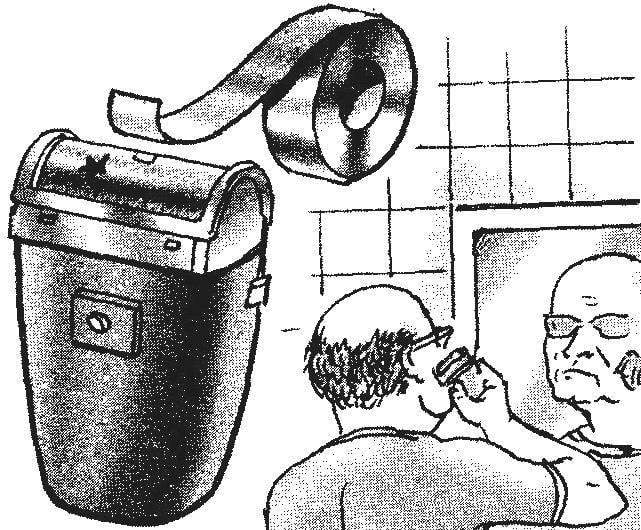
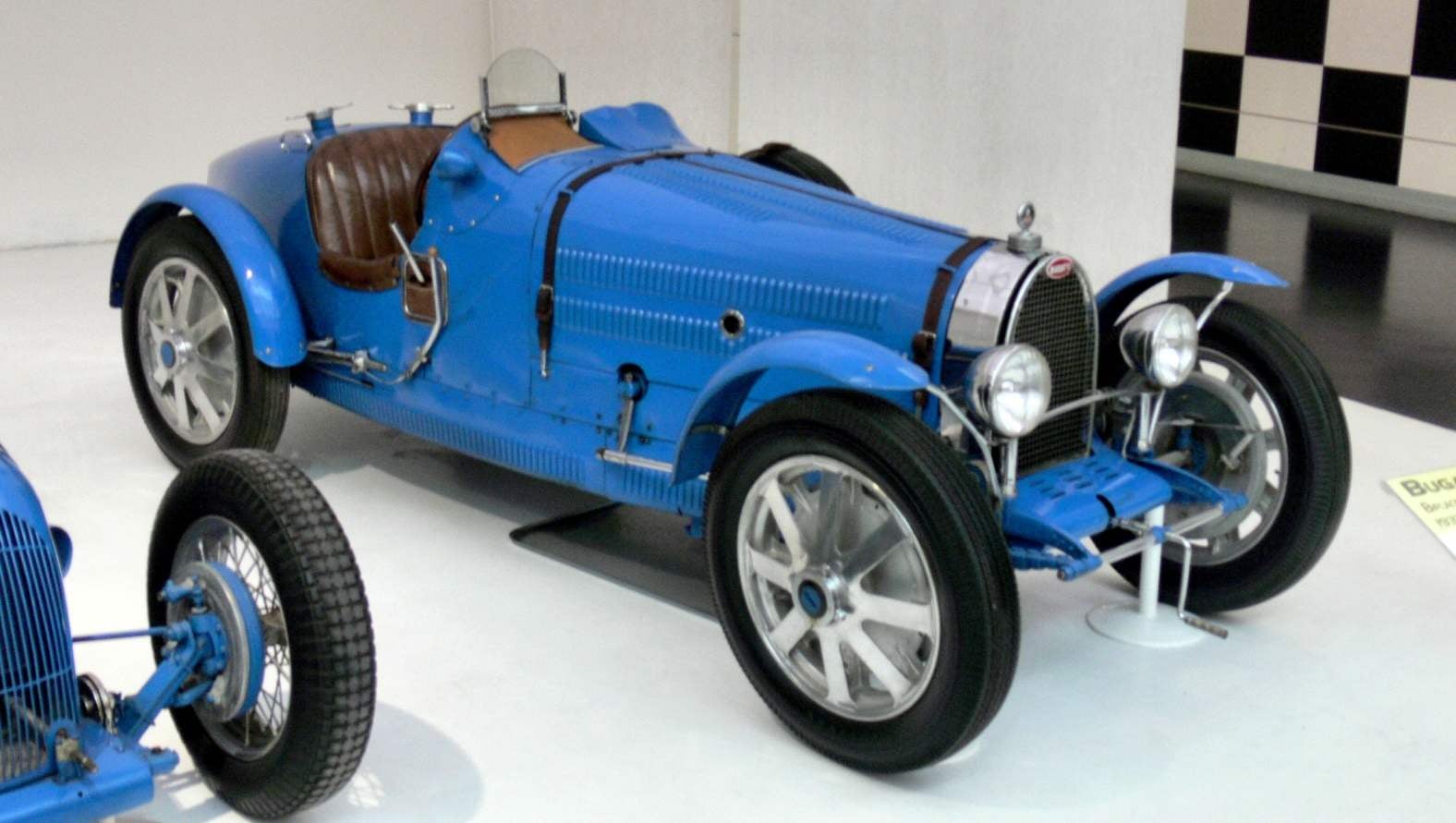
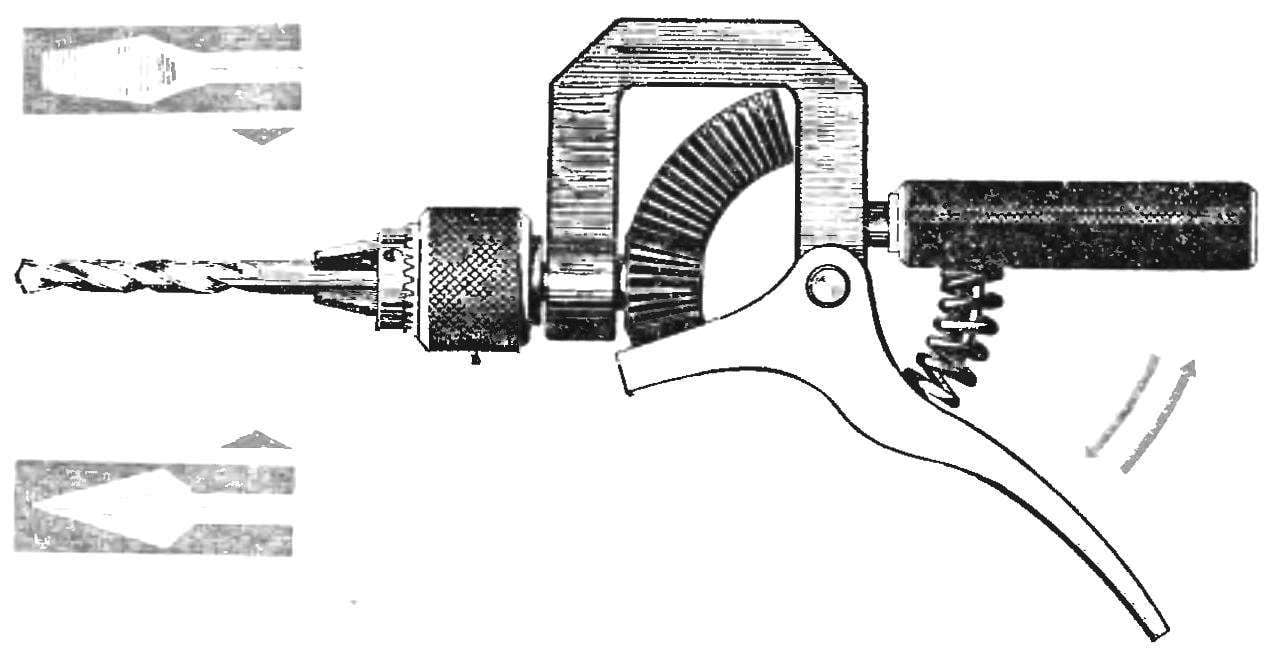
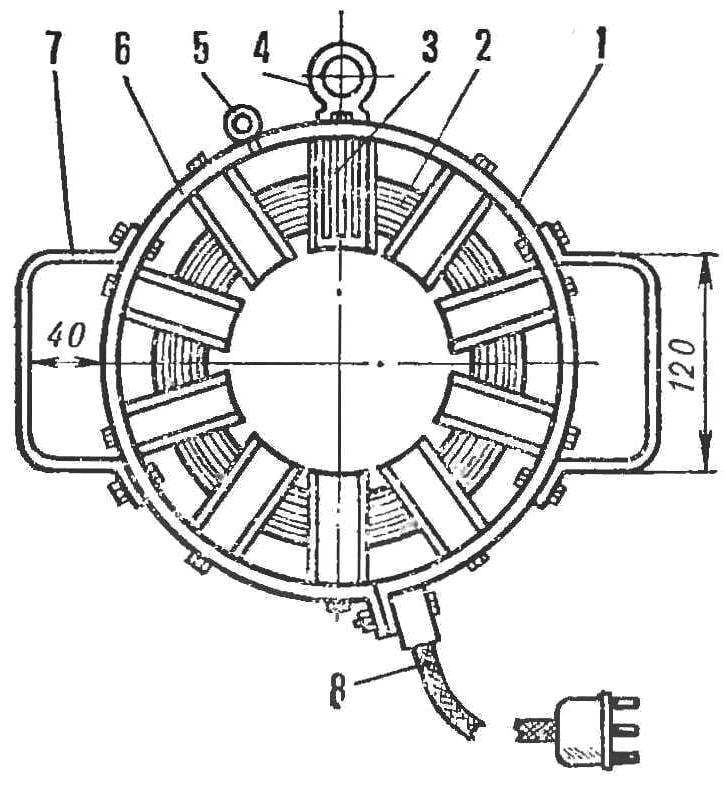
 Sometimes it is difficult to remove on finger tight ring, but much harder — pressed on the shaft bushing or bearing, Not accidentally creating a variety of devices. One of such devices is presented at the NTTM-78 innovator Vladimir Gusev. His puller is very simple and is intended for locksmith’s and repair work — for example, the removal of the bearings from the shaft of the motors. Crank handle with screw case, with the teeth pull the chain and the gripper bar are all a device this portable remover. For adjustment of grippers for various diameter bearings or dismantling of the cross member bushings are supplied with screws.
Sometimes it is difficult to remove on finger tight ring, but much harder — pressed on the shaft bushing or bearing, Not accidentally creating a variety of devices. One of such devices is presented at the NTTM-78 innovator Vladimir Gusev. His puller is very simple and is intended for locksmith’s and repair work — for example, the removal of the bearings from the shaft of the motors. Crank handle with screw case, with the teeth pull the chain and the gripper bar are all a device this portable remover. For adjustment of grippers for various diameter bearings or dismantling of the cross member bushings are supplied with screws.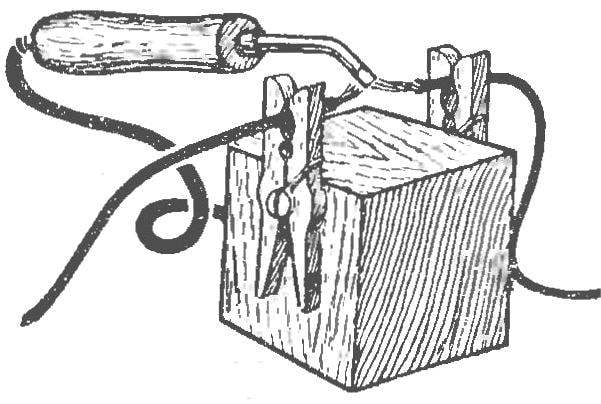
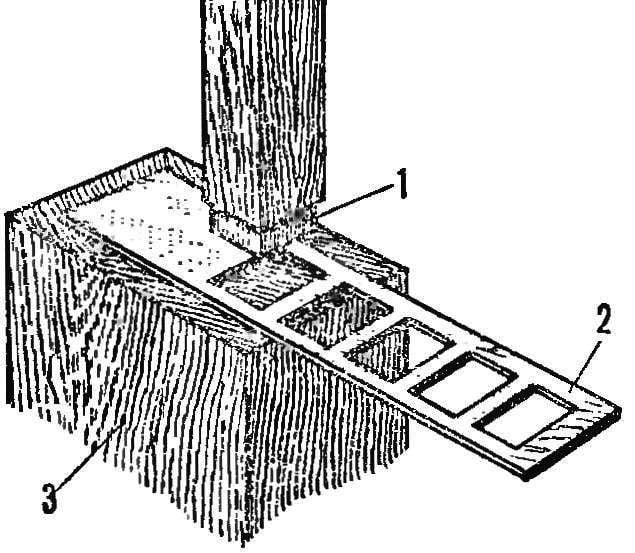
 For the manufacture of parts for models of artillery and torpedo armament of the marine models usually spent a lot of time, it is not always possible to achieve full similarity. Some of the devices and techniques that facilitate the machining of parts and reduces their production.
For the manufacture of parts for models of artillery and torpedo armament of the marine models usually spent a lot of time, it is not always possible to achieve full similarity. Some of the devices and techniques that facilitate the machining of parts and reduces their production.

 In front of you a drawing of a simple model with electric motor and propeller. The real boats of this type are used in shallow rivers where conventional marine propeller can be damaged. Model making used popular material is Styrofoam. It is very easy and well handled. It can be cut with termoresta (see “M-K” № 3, 1978, p. 47), as well as a jigsaw, hacksaw or thin sharp knife. The processing done by plane or blade from a safety razor and a glass cloth. When gluing or painting you cannot apply substances containing acetone or nitrobacteria, as they spoil the foam.
In front of you a drawing of a simple model with electric motor and propeller. The real boats of this type are used in shallow rivers where conventional marine propeller can be damaged. Model making used popular material is Styrofoam. It is very easy and well handled. It can be cut with termoresta (see “M-K” № 3, 1978, p. 47), as well as a jigsaw, hacksaw or thin sharp knife. The processing done by plane or blade from a safety razor and a glass cloth. When gluing or painting you cannot apply substances containing acetone or nitrobacteria, as they spoil the foam.
 Try to imagine the street without the usual clatter of wheels passing hundreds of cars. The wheel… what’s special about it? Meanwhile, in its long history has not written the last page. The wheel is one of the earliest inventions of man — as old as the author of it is unknown. Archaeologists have recently established that wheeled vehicles, the wreckage of which was found during excavations near the village of Bekovo in Bulgaria, around 5850 years! For a long time, while the person harnessed in such carriages of animals, the design of the chassis is almost remained unchanged. Decorated with carvings and gold, the wheels of war chariots of Ancient Rome were basically the same as that of the carts of our century: a wooden ring, tied with an iron Hoop, with wooden spokes in the center of a wooden plate with a hole for the axis. However, already in the XVIII century in expensive carriages occasionally could be seen and metal wheels… But those look like wood. Over time four wheel masters began to wear flat rubber ring — bus.
Try to imagine the street without the usual clatter of wheels passing hundreds of cars. The wheel… what’s special about it? Meanwhile, in its long history has not written the last page. The wheel is one of the earliest inventions of man — as old as the author of it is unknown. Archaeologists have recently established that wheeled vehicles, the wreckage of which was found during excavations near the village of Bekovo in Bulgaria, around 5850 years! For a long time, while the person harnessed in such carriages of animals, the design of the chassis is almost remained unchanged. Decorated with carvings and gold, the wheels of war chariots of Ancient Rome were basically the same as that of the carts of our century: a wooden ring, tied with an iron Hoop, with wooden spokes in the center of a wooden plate with a hole for the axis. However, already in the XVIII century in expensive carriages occasionally could be seen and metal wheels… But those look like wood. Over time four wheel masters began to wear flat rubber ring — bus.